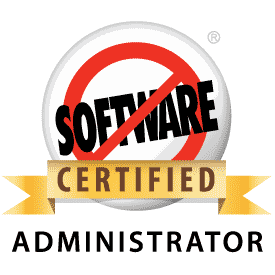
The Salesforce Admin Trinity
Admin, short for Administrator, can be defined as being the “management” of an office, a function, or even a business. A Salesforce admin can be defined as a talented multi-dimensional problem solver. Behind every successful Salesforce deployment is a trained and educated admin who keeps the motor running day in and day out. This post is meant to be a shout out to Salesforce admins everywhere who don’t get the recognition for some of the things that they do to make life easier for users. Here is a list of three things that admins do behind the curtains that users love.
Report Building
Users and Executives alike love analytics. What good is entering all sorts of data into a database if you can’t report on it in a meaningful way and make decisions around the data that impact the bottom line? Often times users just click on links within the reports tab and a beautifully formatted report appears with a useful graphic at the top to help them visualize the data within the report. Unbeknownst to the user someone had to create that report. While Salesforce does ship with a number of canned reports these are mostly just templates of high level types of reports, someone needs to go in and make sure all the custom fields are captured in the report and that the report is summarizing data correctly. Often times this is something that the Salesforce admin has done and saved with a good name and description so that users don’t have to generate their own reports, they can simply just look for ones that already exist.
A really great admin will have created a number of custom reports and use them to generate a dashboard so that a user can see every part of their business in one simple to access place. To go one step further this amazing dashboard that is used to analyze performance across the business can then be scheduled to magically appear in an executives inbox every morning. While this may seem like magic, it is really just a great admin making their users really happy while giving them the tools they need to do their jobs better.
Workflow Rules
In the evolution of getting up and running on Salesforce organizations generally go from data capture to process automation. Where an admin really shines is when they can take an already existing process that may take multiple steps and combine them into one step by utilizing workflow rules. As an example, notifying a sales user when they have an Opportunity that is still Open but the close date is only five days away. An admin can help their users define these rules “in English” then translate those rules into workflow actions that make life easier and more efficient. Certainly there could be a public list view of “All My Open Opportunities Closing in the Next Five Days” (most likely created by an admin too for all users) but for a user to take advantage of this list they would have to proactively look for it. Using a simple time based workflow rule a user can be notified using a detailed email template that gives them all the information about the Opportunity closing in five days and a link to the record so that they can go in and make sure to follow-up and close that deal or push out the close date - either way it makes for more accurate data and has automated a step of a user having to go look in Salesforce at a list that could potentially be empty.
Formula Fields
So often organizations are migrating from Excel into Salesforce. When they make this migration they often miss having all those calculations done for them within Excel. A savvy admin will take care of all those automatic calculations using formula fields in Salesforce. Not only can simple numbers be calculated on a record such as the age of an Open Case, or the Net Amount of an Opportunity after a percentage discount has been applied, but formulas can also do some magic with making data visible in places where it normally wouldn’t. These are called cross-object formula fields and users love them. In general any data that is related in Salesforce can be viewed on a report in one place. Often times though users want to see related data on the detail section of a child record - this is where cross object formulas come into play.
Let’s say we have a custom object called Project. These Projects are children records of the Account object and on our Account object we have a field called Type. In this Type field are all the different types of Accounts we work with on our projects. Simply put, you can pull this Type field from the Account record that the Project is related to directly onto the Project record so that a user can see the Type of Account this particular Project is related to. No double entry for the user, no bad data due to double entry, and no needing to go to a report to see what the Account Type is on all the Projects that a user is working on.
These are just three examples of what admins do to make life easier for end users of Salesforce. There are a lot more examples and I’d love to hear from you admins out there about what you do for your end users to make them happier and more productive. Leave some comments below or feel free to comment on our Facebook page or tweet me directly @JustEdelstein.
